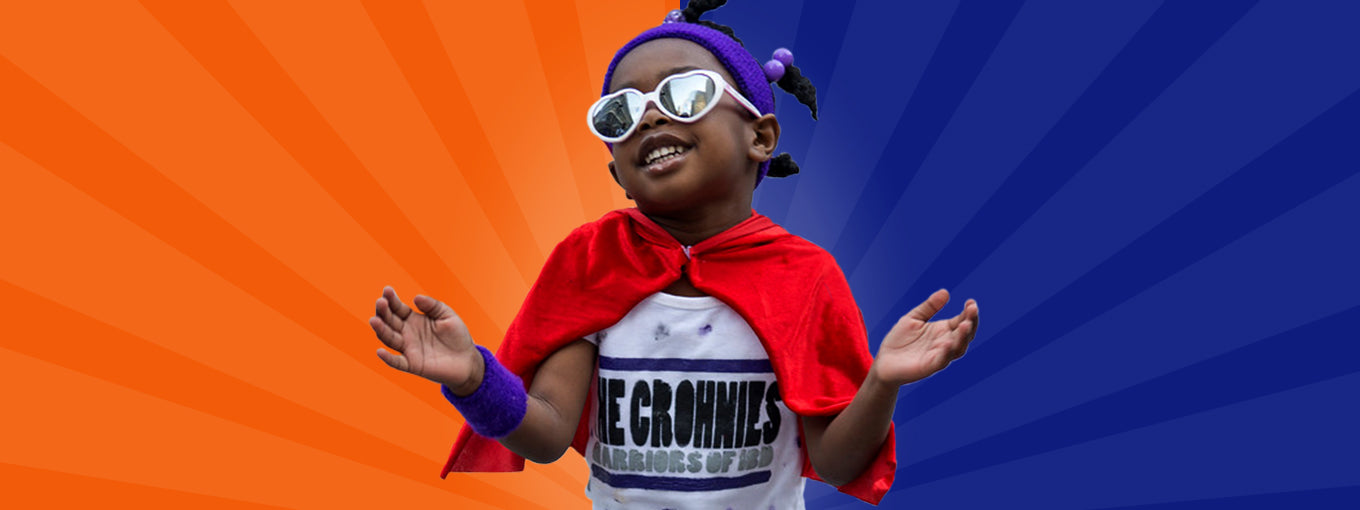Have you ever been backed up for so many days (or weeks) that you fantasized about giving yourself diarrhea? Around 4 million people in the US experience frequent constipation. Struggling to poop or feeling like you have to take a dump but can’t are both symptoms of constipation. And while this is an uncomfortable bummer, it’s usually not serious. Fortunately, incorporating specific exercises into your routine can help alleviate constipation. Aerobic exercises, yoga poses, and certain stretches can stimulate bowel movements and improve digestive health.
Using a bidet attachment can also provide a more comfortable and thorough clean after releasing your bowels. Check out our selection of bidet attachments to enhance your routine.
Causes of Constipation
Understanding the root causes of constipation is essential for finding effective relief. Common causes include:
- Diet
- Stress
- Hormonal imbalance
- Medications
- A lack of exercise
- Not pooping when you feel the need to
- Medical conditions like IBS
Exercises to Help Constipation
There are lots of ways to help prevent constipation, namely drinking enough water, eating fibrous foods, and pooping when you feel the need to. These are all great strategies to help PREVENT constipation but what if you need relief now? One of the best ways to relieve constipation is to exercise! Exercising can stimulate your digestive system by helping food move through your digestive tract more effectively helping you to stay regular.
Below you’ll find a guide to the best workouts for constipation that can help you get your system flowing again. Don’t worry about hitting all of these poop exercises, just pick a couple that seem fun or interesting. Ready? Let’s get started!
Cardio

Cardio is any type of aerobic exercise that helps condition your cardiovascular system aka your heart, blood and vessels. This includes exercises like running, hiking, cycling, swimming, skiing, and dancing.
Cardio is magic for constipation because it stimulates the gut while helping move digested food through your system. Aerobic exercise increases blood flow to all of your muscles (including those in the digestive system) while helping to diversify the microbes in your gut.
Here are a few cardio exercises to relieve constipation immediately:
Jump Squats
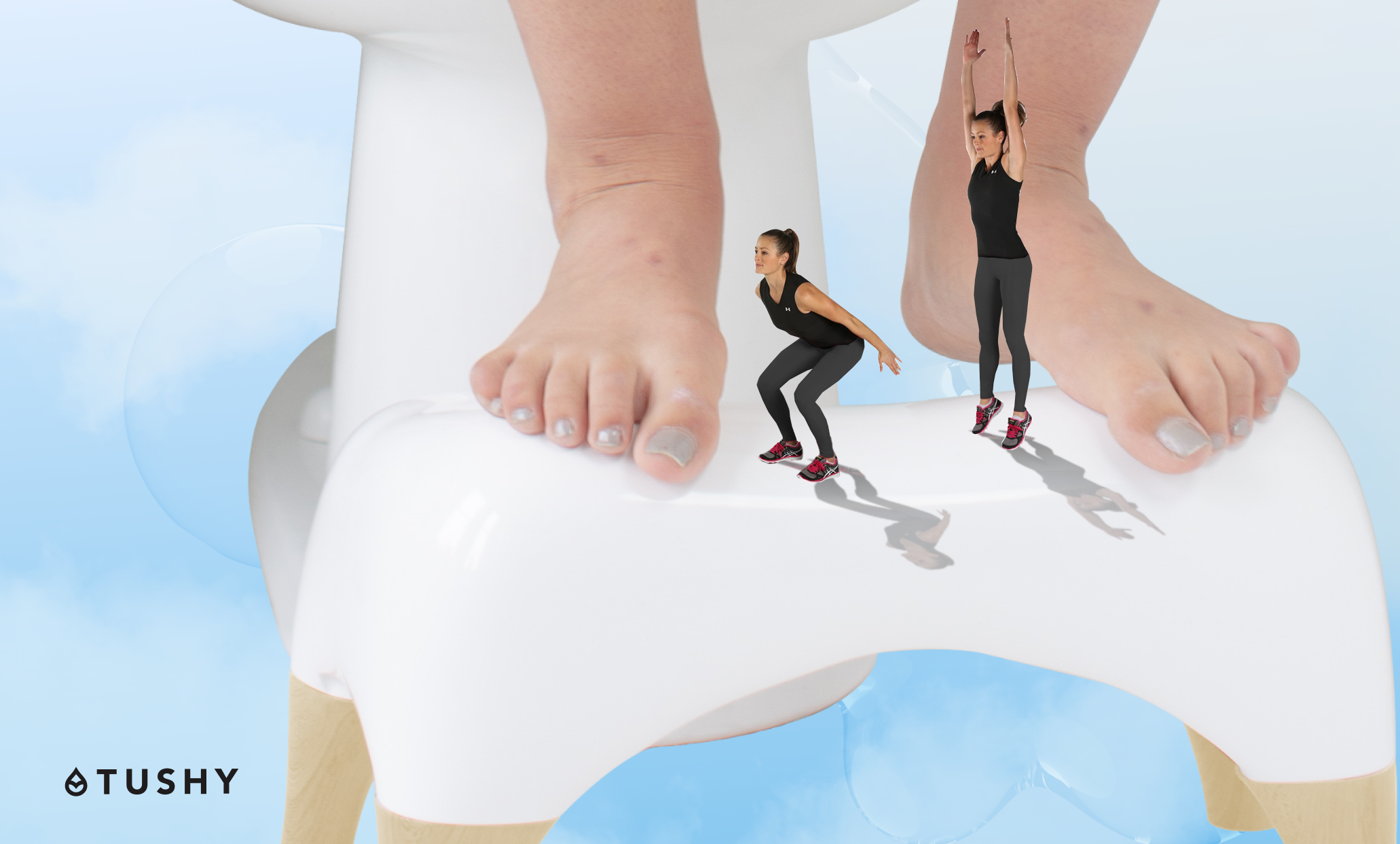
Squats are already A+ bowel looseners, but adding a jump can help increase that downward momentum you’re after.
- Keep your knees aligned with your ankles and squat down.
- On your way up, lift your body into a jump using your abdomen to lengthen your torso.
- Repeat for 5-10 reps to score a date with your toilet seat (and TUSHY).
Another way to squat is to use the TUSHY Ottoman toilet stool. Available in two pooping heights, this stool places you in a seated squat position to help unkink your colon and open the poop gates.
Jogging
If you’ve ever jogged with a colon full of poo, you know how hard it is to keep your booty clenched. Good ole fashioned Jogging can effectively relieve constipation. The repetitive motion of jogging stimulates your digestive system and encourages bowel movements, making it easier to poop. If a jog isn’t helping, pick up the pace and take off into a full run. Be sure to guzzle down plenty of water to keep your digestive system hydrated.
Biking

Constipated with crap joints? Biking is a great lower-impact cardio exercise to relieve constipation immediately. Biking stimulates your bowels through deep breathing, lower muscle stretching, improved blood flow, and better posture.
- Select a bike that’s the right size for you to avoid straining your body. Most bike shops will be able to help you pick a good frame size.
- Make sure to wear a helmet anytime you ride your bike.
- Choose where to bike – you could commute to work or pedal through a park. 30 minutes of cardio every day is the goal. Just be sure to follow the rules of the road and watch out for vehicles.
- Start riding! As you become a stronger biker you can select longer routes and increase your speed.
Pelvic Floor Exercises
Activating your pelvic floor will give you legendary bladder control while also helping counter gut health problems, such as chronic constipation or incontinence. Pelvic floor exercises strengthen the muscles that support the bladder, intestines, and uterus. These exercises help improve bowel movements by enhancing muscle coordination and control during defecation.
Forward Lunge

Much like squats, lunges instigate the downward flow of all that built up BM in your gut. Keep a steady and consistent momentum during your lunge reps, starting with your back straight and your knees above your ankles to open up your hips.
- Stand with your feet hip-width apart.
- Step forward and bend both knees, lowering until your knees are bent at a 90-degree angle.
- Shift forward onto the lead leg.
- Push off both legs and step through, lifting your back leg and bringing it forward so your rear foot lands ahead of you in a lunge position.
Bird Dog
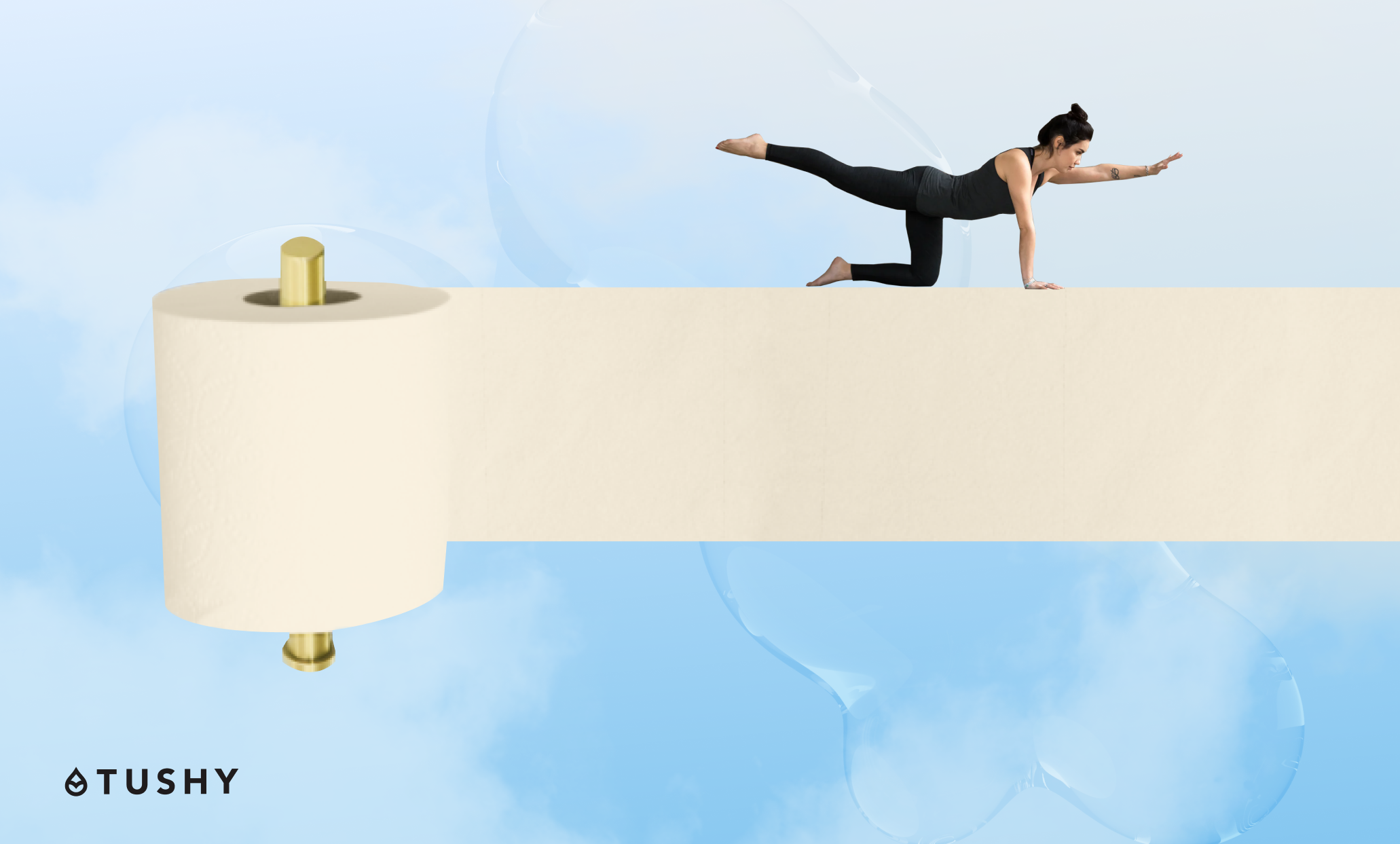
If you’d ever done the Bird Dog, chances are you’ve farted. This position is a bodyweight exercise that strengthens the core and stimulates the digestive tract, starting on all fours. It requires no equipment other than a mat (and hopefully shortly after, a toilet!).
- Begin on all fours. Place your hands on the floor under your shoulder with knees under your hips.
- Reach your right arm forward and your left leg back so your right arm and left leg are parallel to the ground.
- Return to the starting position and repeat the same steps for the other side.
- Repeat for 5-10 reps.
Squats

Squatting is the gold standard of sh*tting. It's how all of our ancestors did the deed. Squatting aligns the colon in a way that makes it easier to pass stool. It’s why pooping stools are a thing. The position straightens the rectum and relaxes the puborectal muscle, which can help relieve constipation, and knock your days-old deuce loose!
- Stand with your feet shoulder-width apart.
- Extend your hands out in front of your body to help you maintain your balance.
- Bend your knees and hips as you move and squat toward the floor.
- Squat down low as you keep your head and chest lifted. Your knees should be over your ankles.
- Push through your heels to bring your body back into a standing position.
- Repeat! 3 sets of 10 repetitions is a good place to start.
Glute Bridge

The iconic pelvic thrust of the 80s does awesome things for your poop organs. Glute bridges are fantastic for people with balance issues as the whole thing happens on your back.
- Lie on your back with your legs outstretched.
- Bend your knees so both knees are pointed up with your feet on the ground.
- Extend your arms along the sides of your body with your palms facing down.
- Push down with your arms and feet while simultaneously lifting your chest.
- Hold this pose for up to 30 seconds.
- Release the pose and allow your back to touch down on the ground and extend your legs again.
Yoga for Constipation
Certain yoga postures or asanas stretch the abdomen, applying pressure and massage to promote digestion. Even if you’re as flexible as a Pringle, there are many calming properties to yoga that can lower stress, increase circulation and promote gut movement.
The Wind-Relieving Pose, Seated Twist, and Cobra Pose are among the best yoga moves for relieving constipation.
Wind Relieving Pose
A fart or as the Brits say “wind” is guaranteed every time you do this pose. This yoga position relieves the tension in the abdominals and pelvis that can build when you can’t drop a deuce. Here’s how:
- Lie on your back with legs and arms outward stretched.
- Draw both of your knees toward your chest as you exhale and put your hands around them.
- Holding your right knee, extend your left leg outward along the floor. Hold this pose for up to one minute.
- Bring your knee back and repeat with your right leg.
- The last step is to bring both knees back to your chest and bring your hands around them again.
- Finally, release your knees and extend your legs back to the floor and rest.
Half Spinal Twist

This yoga pose is a seated half twist with some forward and backward bending of the spine and a nice lateral stretch. Gentle twists help massage abdominal muscles in the large intestine to relieve constipation, indigestion and other digestive issues.
- Sit on the floor with your legs outstretched.
- Bend your knees and place your feet on the floor.
- Slide your left foot under your right leg and lay your left leg on the floor.
- Step your right foot over the left leg and stand it on the floor so your knee is pointing straight up.
- Slowly twist your body toward your right thigh as you exhale.
- Set your left upper arm on the outside of your right thigh.
- Slowly twist your head to the right to increase the stretch.
- Hold the pose for 30 seconds to 1 minute and repeat for the other side.
Cobra Pose
This serpentine stretch is one of the best yoga stretches for constipation. Cobra Pose helps treat digestive issues, strengthen abdominal muscles, and clear the digestive tract.
- Start by lying face down on the floor with your legs extended behind you.
- Place your hands on the floor below your shoulders.
- Lift your head and chest off the floor as you inhale.
- Keep your gaze on the floor. If you are flexible, look toward the sky.
- Draw your shoulders back as you straighten your arms.
- Only straighten your arms to a level that you're comfortable with.
- Hold the pose for up to 30 seconds.
- Exhale and lower your head and chest back to the ground.
Deep Breathing Exercises

Constipation is often brought on by stress, which makes sense considering the connection between our guts and our brains. (Basically, toxic feelings affect how we process toxins. Neat!) Relieving constipation can be as simple as taking a minute to just breathe and meditate. Now, take a deep breath in…do you smell something?
Deep breathing exercises bring consciousness to your breath to help trigger the relaxation response in the body. By increasing the relaxation response, you can help regulate stress which can be beneficial to your digestive system. Here are a few of the most common deep breathing exercises that can help relax your body and mind:
Alternate Nostril Breathing
- Find a comfortable place on the floor or on a chair where you can sit uninterrupted for a few minutes.
- Slightly lift your head so that you lengthen your spine.
- Rest your left palm on your left knee and bring your right hand to your nose.
- Gently close your right nostril with the thumb on your right hand.
- Slowly inhale through your left nostril then close it with your ring finger.
- Take your thumb off your right nostril and slowly exhale.
- With the right nostril still open, slowly inhale the close it with your thumb.
- Open and slowly exhale from your left nostril.
- Repeat this process 5-10 times.
Diaphragmatic Breathing
Diaphragmatic breathing, also known as deep breathing, helps relax the diaphragm and stimulate the digestive system. This technique can improve oxygen flow and promote a calming effect on the body, aiding in the relief of constipation. Here’s how to do diaphragmatic breathing:
- Lie on your back on a flat surface while supporting your head and bending your knees.
- Place one hand on your chest and the other directly below the ribcage.
- Slowly breathe in so your stomach moves out and presses against your lower hand. The hand on your chest shouldn’t move.
- Tighten the muscles in your stomach and allow them to fall inward as you exhale with pursed lips. The hand on the upper chest should remain still and not move.
- Repeat for 5-10 minutes. You can use this technique 3-4 times per day in the beginning while gradually increasing the amount of time.
4-7-8 Breathing
- Slowly inhale for a count of 4 seconds.
- Hold your breath for 7 seconds.
- Make a whooshing sound as you slowly exhale for a count of 8 seconds.
- Try to repeat this 4 times in the beginning and gradually increase as you become more experienced.
Regular Movement
A body in motion makes for a happy gastrointestinal tract. And you don’t have to be a mega-athlete or have perfect form to give your system what it needs. Just 30 minutes of movement each day is all it takes! Go for a walk. Crawl on all-fours in the garden. Bike to the office. Play a video game standing up. Take the stairs. Dirty-dance in the kitchen while waiting for your pasta water to boil.
Just get up and out of your chair to remind your organs to do their jobs! When we sit for extended periods of time, we kink our system like a garden hose. Try setting reminders or alarms in your phone to build mindful movements into each day.
You can use any of these exercises to restore regular bowel movements anytime you feel constipation creeping in. Now take a break from that killer set and go poop. Be sure to wash with a TUSHY affordable bidet attachment when you’ve gotten it all out. The only thing better than a healthy bowel movement is a clean happy butt.
Frequently Asked Questions
1. What’s The Best Time To Exercise?
It takes about 36 hours for food to move through the entire colon – meaning we’re always digesting something. Any movement at any time of day is beneficial. However, a brisk walk after a light meal or snack (wait an hour after a bigger meal) keeps blood flowing to your muscles to promote more efficient digestion. Higher impact activities like running should be reserved for early in the morning, when your gut is less taxed.
2. How Does Exercise Help You Poop?
Exercise and running can help you poop by lowering the time it takes food to move through the large intestine. This in turn limits the water your body absorbs from the stool, which is often the cause of hard, dry stools in the first place. Cardio also speeds up your breathing and heart rate which advances all of your bodily functions.
3. What Are Other Ways To Relieve Constipation?
If you have had fewer than three BMs in one week, try drinking coffee, incorporating more fiber into your diet and making sure you’re downing plenty of water. You can also reach for laxatives, suppositories and, with a doctor’s support, enemas. But generally diet and physical activity will clear up constipation.
4. Why Can’t I Poop?
Constipation is a super common condition affecting 4 million Americans each year. The reason? Changes to your routine. Stress, travel, new medication, dehydration and insufficient fiber are some of the biggest causes of feeling backed up. If you aren’t feeling the urge to go, or have to go but can’t produce a BM, you may have a pelvic floor issue or an impaction and should talk to your doctor.
Regular exercise can greatly improve digestive health and help you poop immediately. Whether it's cardio, yoga, or targeted stretches, these activities can alleviate constipation and encourage regular bowel movements. To ensure optimal booty health, pair your exercise routine with a TUSHY bidet attachment and other products for a thorough and comfortable clean. Discover our selection of TUSHY products to enhance your digestive wellness and hygiene.


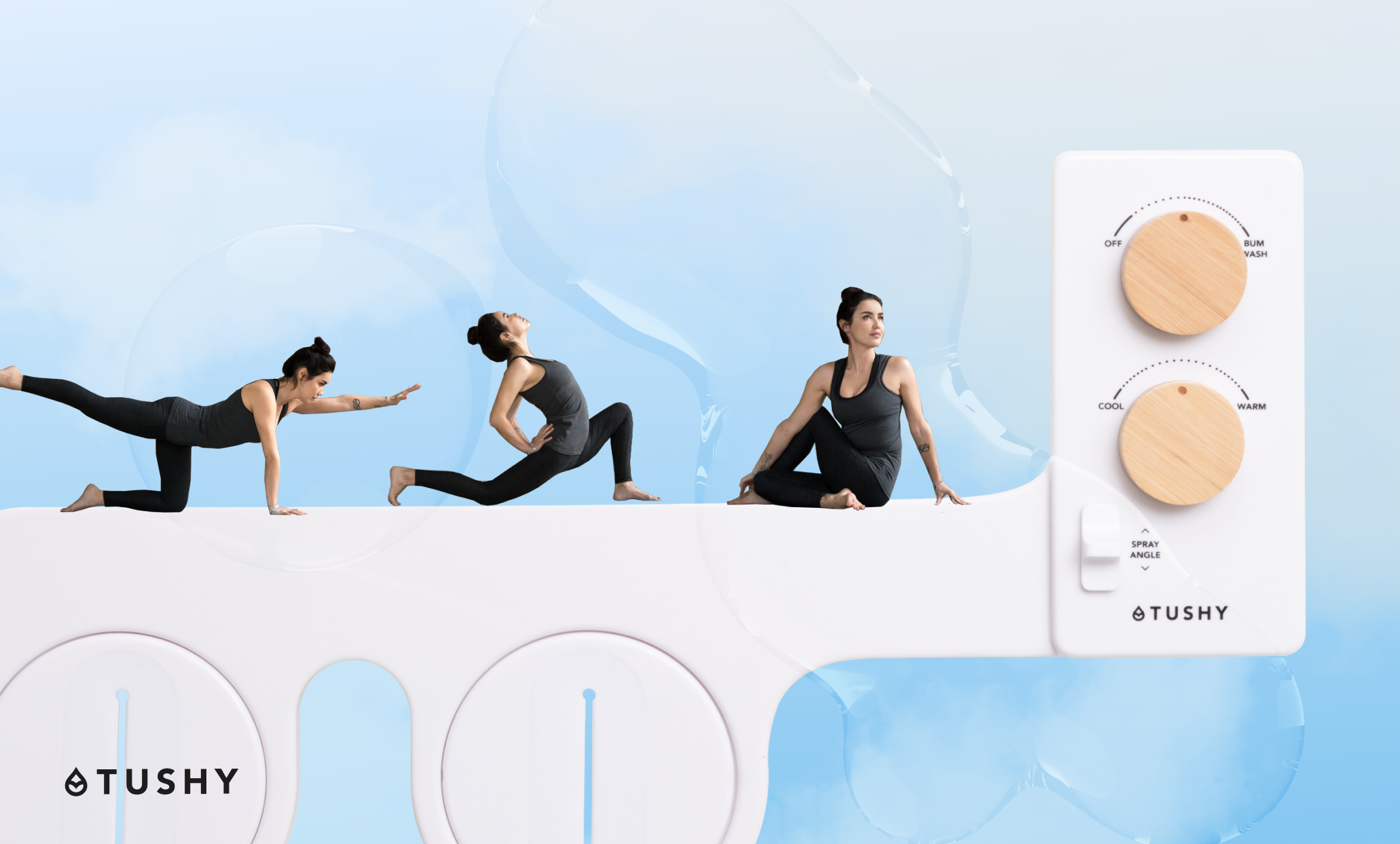
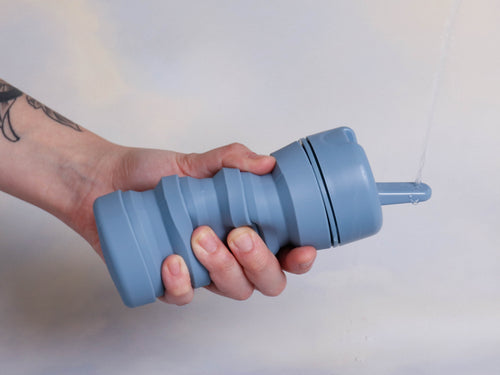
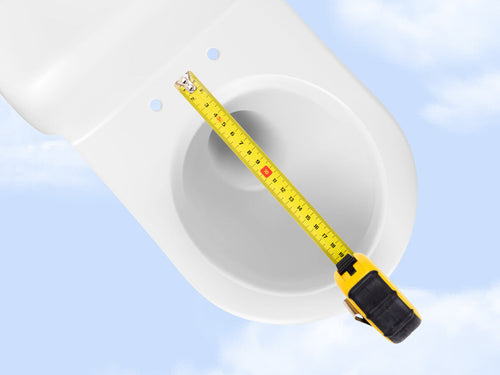




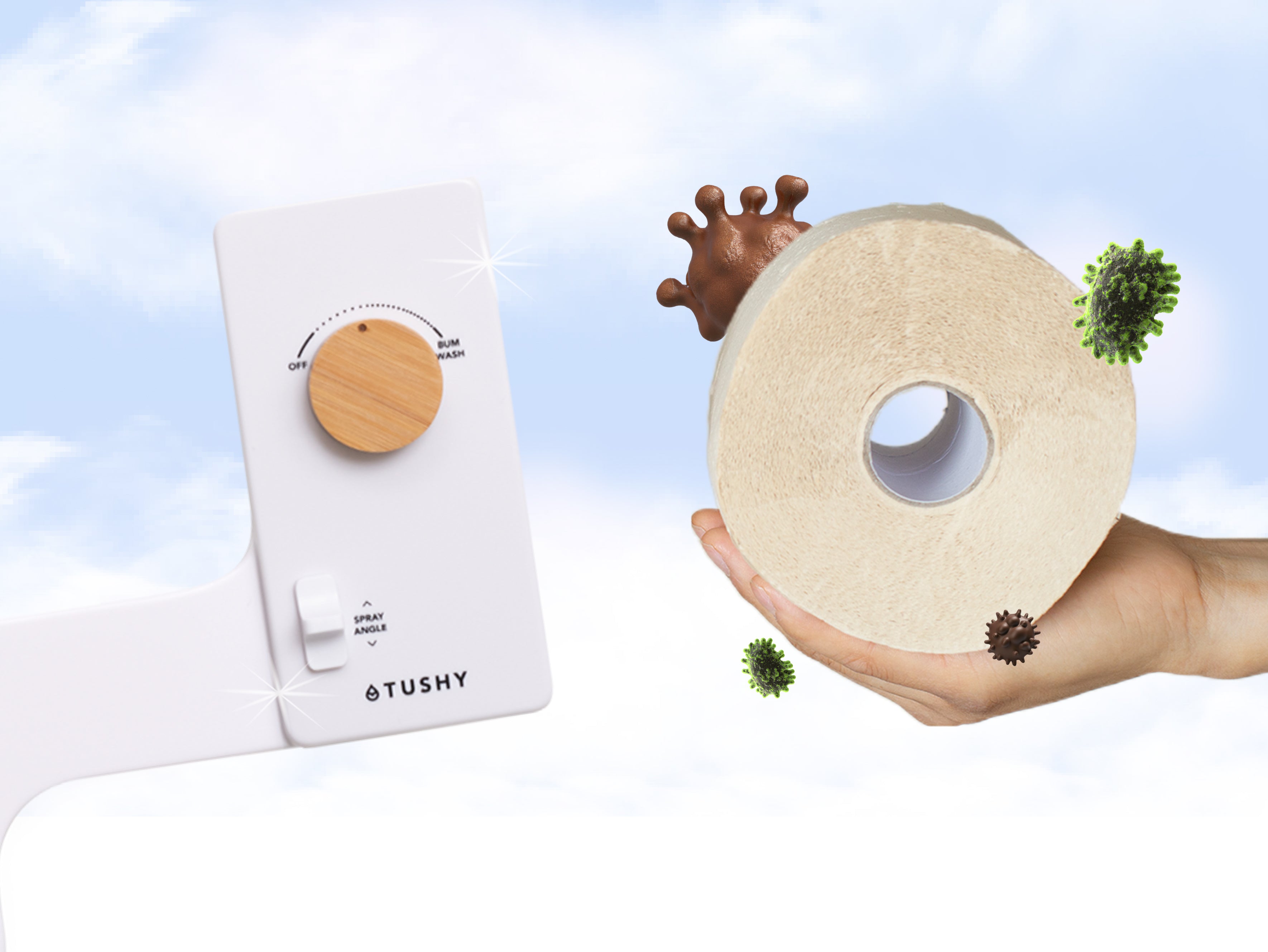

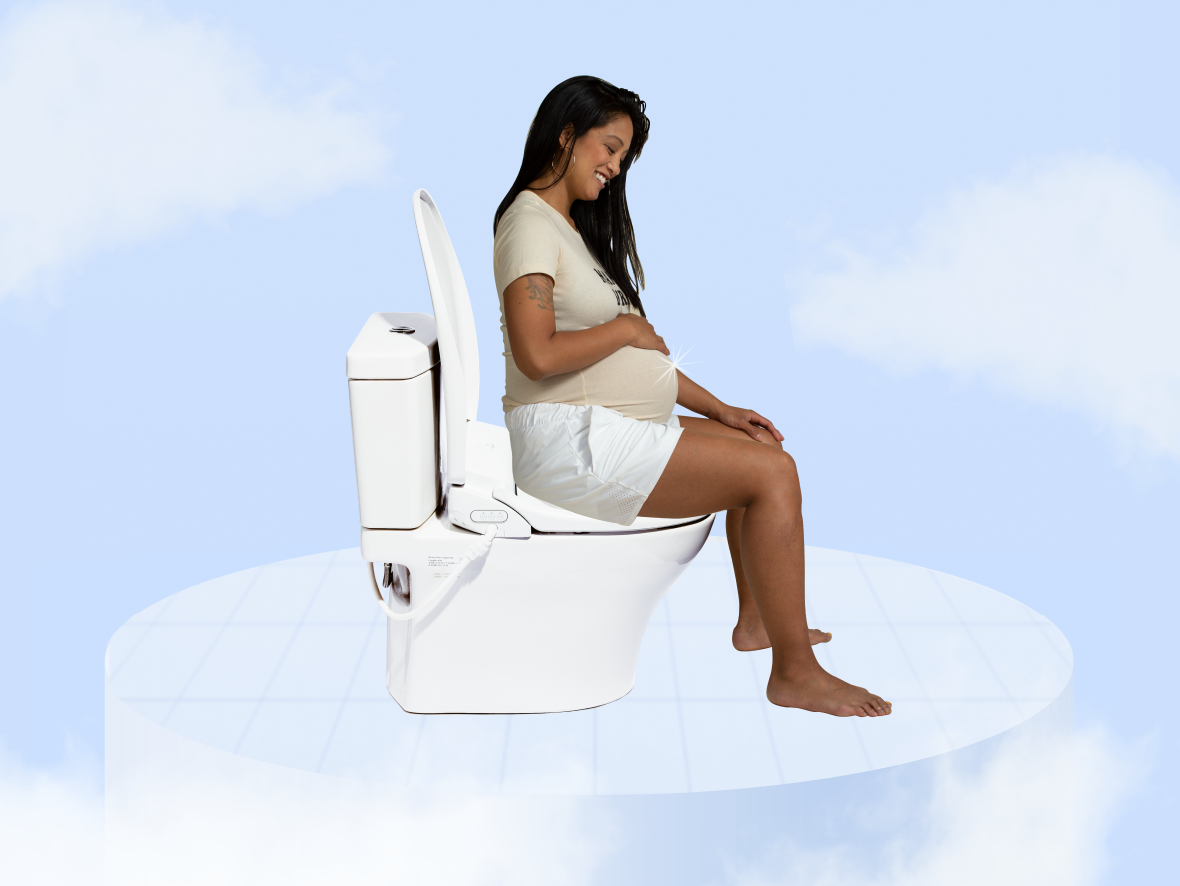

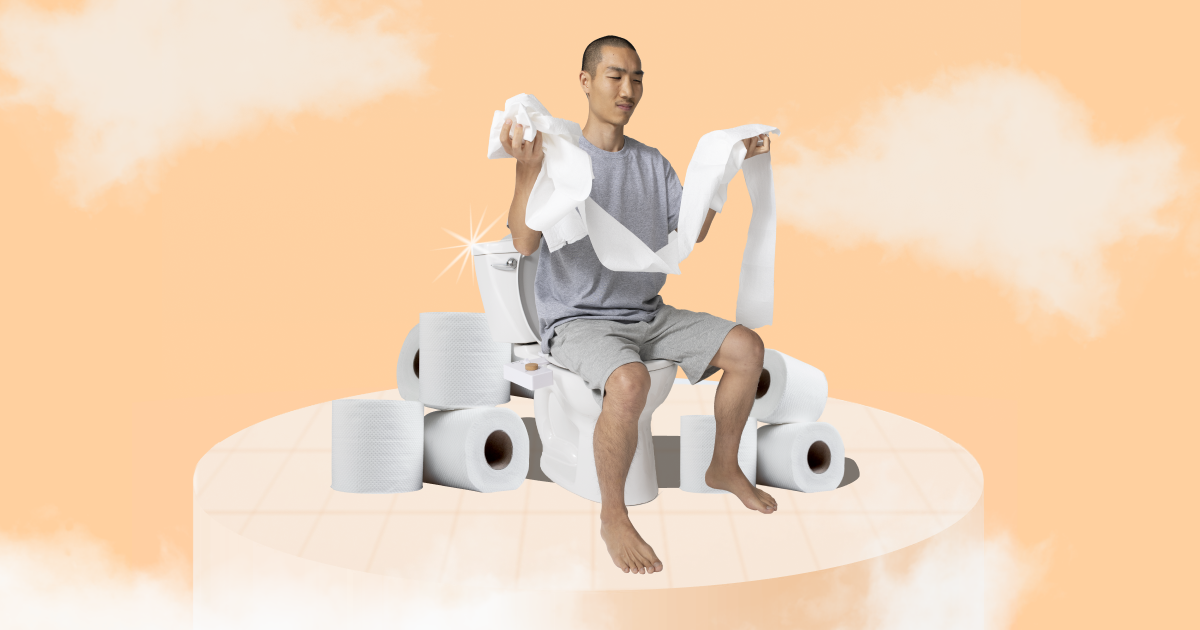

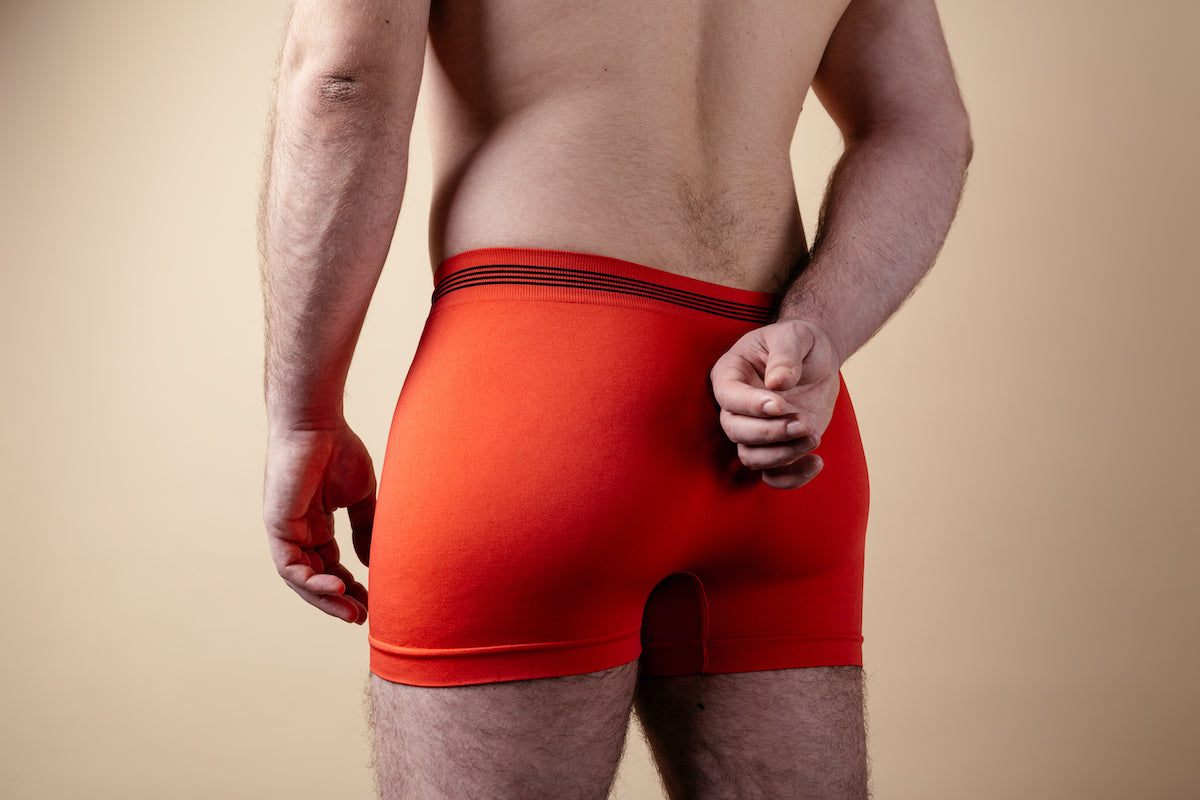
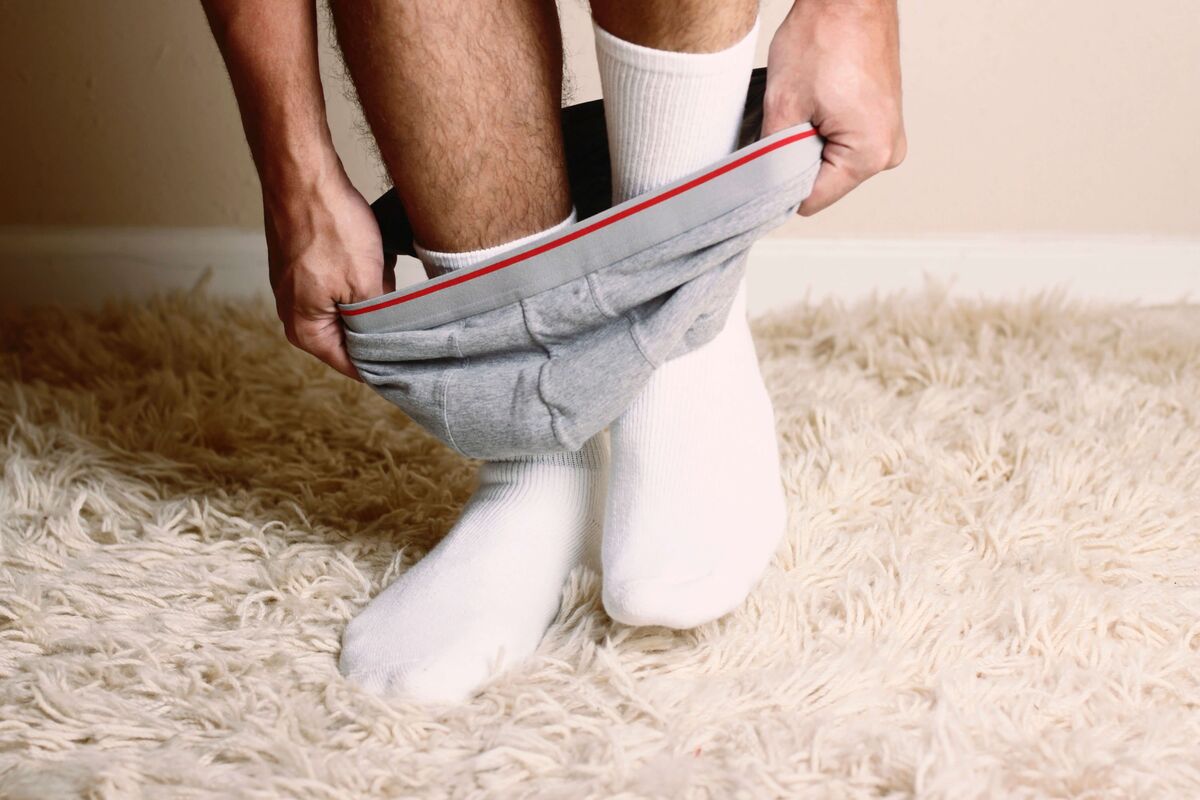
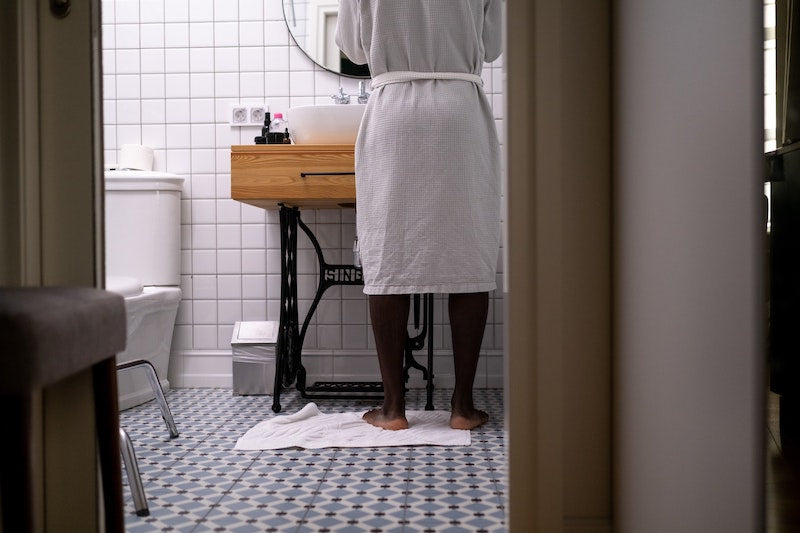
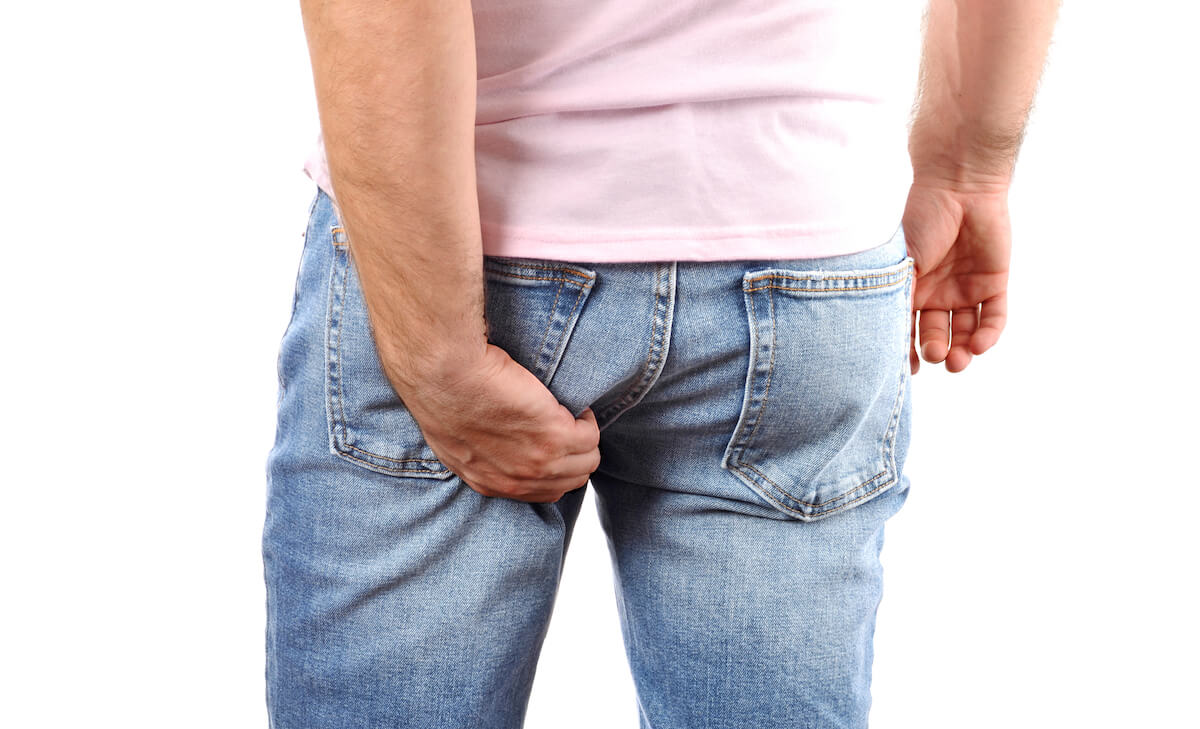
![Why It Feels Good to Poop [Poophoria Explained]](http://hellotushy.com/cdn/shop/articles/Poophoria_Explained.jpg?v=1611854103)



